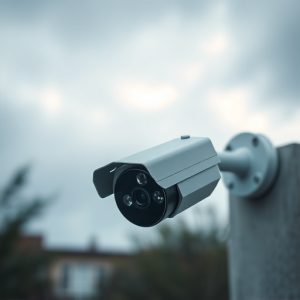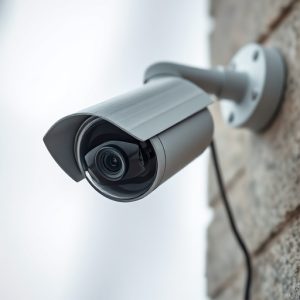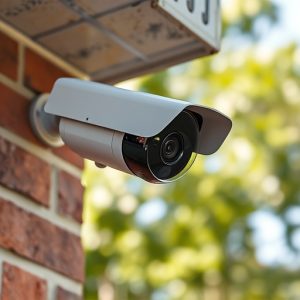Fake CCTV Cameras: Understanding Deterrent Effectiveness & Best Practices
Fake CCTV cameras, with their realistic design and strategic placement, act as powerful psychologica…….
Fake CCTV cameras, with their realistic design and strategic placement, act as powerful psychological deterrents against criminal activity. Their visual similarity to real cameras creates a convincing surveillance presence, discouraging intruders without complex installation or maintenance. When blended seamlessly with genuine equipment, these decoys significantly enhance physical security, fostering safer environments as part of an overall security strategy.
“Unveiling the Power of Visual Deterrence: Exploring Security Camera Housings Without Electronics
In an era where security measures evolve, understanding the impact of visual deterrents is paramount. This article delves into the concept of fake CCTV cameras and their intriguing effect on crime prevention. We explore how these lifelike but electronic-free housing units can significantly enhance security without relying on complex technology. By examining key factors and best practices, we uncover the true potential of fake CCTV cameras in deterring criminal activity, offering a cost-effective and visually compelling solution.”
- Understanding the Concept of Fake CCTV Cameras
- Factors Determining Their Deterrent Effectiveness
- Implementation and Best Practices for Optimal Results
Understanding the Concept of Fake CCTV Cameras
A Fake CCTV Camera, also known as a decoy or dummy camera, is a visual deterrent designed to mislead potential intruders. It mimics the appearance of a real security camera but lacks the necessary electronics and functionality. This clever device serves as a powerful psychological tool in home and business security systems. By strategically placing fake cameras around properties, homeowners and businesses can create the perception of enhanced surveillance, thereby discouraging would-be criminals from targeting their locations.
The deterrent effectiveness of Fake CCTV Cameras lies in their ability to provide an inexpensive yet convincing safety measure. Unlike real cameras that require intricate installation and ongoing maintenance, dummy cameras are easily installed, making them an appealing option for those seeking a simple, cost-effective security solution. Their presence alone can significantly alter the behavior of potential thieves, leading them to believe they are being watched, even if there is no actual video surveillance in place.
Factors Determining Their Deterrent Effectiveness
The deterrent effectiveness of a fake CCTV camera, or a security camera housing without electronics, depends on several key factors. One of the primary considerations is the camera’s visual appearance and realistic simulation of actual surveillance technology. A well-designed fake camera should closely mimic genuine CCTV equipment in terms of size, shape, and positioning to create a strong psychological impact on potential offenders. Its lifelike features can instil a sense of fear and deter individuals from engaging in criminal activities.
Additionally, the strategic placement of these decoys is crucial. Positioning them in high-risk areas, such as entry points, parking lots, or locations with valuable assets, can significantly enhance their deterrent effect. The more realistic and strategically placed fake CCTV cameras are, the greater the likelihood that they will discourage criminal behavior. This strategy often forms part of a broader security approach, combining physical deterrents with other measures to create an overall safer environment.
Implementation and Best Practices for Optimal Results
Implementing a security camera housing without electronics can be an effective strategy to enhance physical security, especially when combined with realistic fake CCTV cameras. The key to optimal results lies in strategic placement and maintaining an authentic appearance. Positioning these dummy cameras at entry points, perimeters, or areas prone to theft or vandalism creates a powerful deterrent effect, misleading potential intruders and encouraging them to seek easier targets.
Best practices include ensuring the fake cameras blend seamlessly with genuine security equipment, using high-quality materials that resemble actual cameras, and mounting them at eye level to maximize their impact. Regular maintenance and periodic testing are essential to maintaining the deterrent effect. Even static fake CCTV cameras can significantly deter crime when installed as part of a comprehensive security strategy, providing peace of mind for businesses and homeowners alike.
A security camera housing without electronics, while appearing as a genuine surveillance tool, is ultimately more about its psychological impact than technical functionality. By simulating the presence of a functional camera, these fake CCTV cameras can significantly enhance deterrence by making potential criminals think twice before committing an act. The deterrent effectiveness is influenced by various factors, such as placement, realism, and local crime patterns. When implemented strategically and combined with best practices, like regular maintenance and community involvement, fake CCTV cameras can contribute to a safer environment. Remember, their true power lies not in the technology but in the perception they create.


